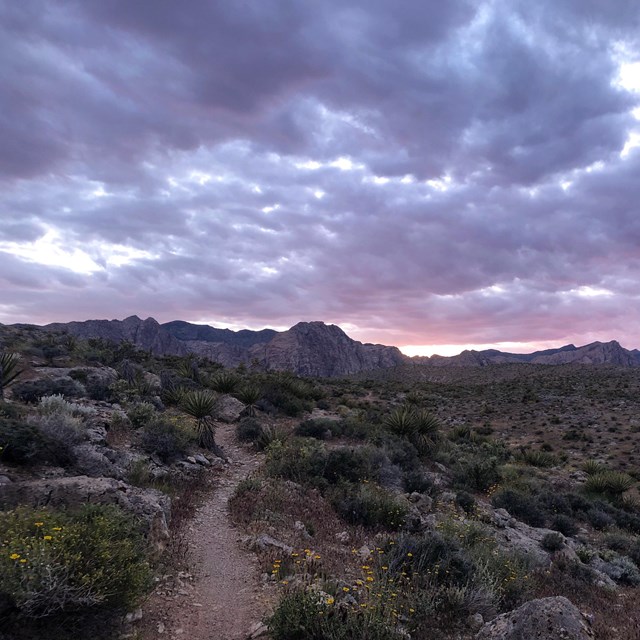Last updated: November 30, 2020
Article
The Indian Grove within Great Sand Dunes National Park and Preserve

Image courtesy of Marilyn Martorano
Located near a mountain pass and a perennial water source within the boundaries of Great Sand Dunes National Park and Preserve in southern Colorado is a stand of approximately 200 ponderosa pine trees, of which 72 trees have been culturally modified —that is, altered by people. Known as the Indian Grove, the ponderosa pines with their tall, straight trunks and rusty orange bark composed of broad plates, were peeled and harvested by the Ute, Apache, and other indigenous people in the 19th century for food and medicine.
Archeologist Marilyn A. Martorano describes culturally modified trees as, “trees that exhibit peels, ax cuts, delimbing, wood removal, and other cultural modifications. Research has shown that these trees are artifacts reflecting cultural utilization of trees by American Indians and other peoples.” The Indian Grove within Great Sand Dunes National Park and Preserve is the only stand of culturally modified trees listed on the National Register of Historic Places. The nomination establishes a period of significance from circa 1815 to 1900, with dendrochronological analysis suggesting that the trees were primarily peeled between 1815 and 1846.

Image courtesy of Marilyn Martorano
Layers of bark were collected from ponderosa pine trees for a variety of uses. Consultation with tribes and ethnographic and historic data suggests that the trees were peeled to procure inner and outer bark, in addition to pitch or sap. The outer bark may have been used to construct items such as trays and baskets or used as materials in construction. The inner bark, pitch, and sap were utilized as food and medicinally as a poultice or drink. Pitch may have also been used as an adhesive or sealant. The average size of a tree modification scar is approximately 4 feet long by 17 inches wide, which would yield roughly one pound of inner bark.
Throughout the year, National Park Service staff track the conditions of the culturally modified ponderosa pines, each of which has a unique identifying number. The trees are significant cultural resources worthy of protection. As westward expansion increasingly encroached on Ute territory in the 19th century, particularly following the end of Mexican American War in 1848 and later with the discovery of gold in Colorado, several treaties restricted the Ute to areas that were a small portion of their traditional territory. The Ute people no longer had access to the ecosystems and resources that had sustained them for generations. These culturally modified pines are a reminder of human interactions with the land and represent living artifacts of significant lifeways that reflect the cultural uses of trees over time.
Not far from this important cultural site runs the North Branch of the Old Spanish National Historic Trail (NHT), which follows paths established over generations of use by the Ute and their ancestors, who know the Great Sand Dunes area as Saa waap maa nache, "sand that moves." The Old Spanish NHT was a trade route in commercial use from 1829 through 1848 that connected settlements in present day northern New Mexico with communities in southern California. The trade caravans crossed through Ute territory and the Ute and other indigenous people would have also used the trail and witnessed trade traffic during this period.
Having lived in Colorado since time immemorial, the Ute people play an integral role in the history of the region and are intimately connected to the ecosystem and its resources. The Ute are one people that consist of seven bands and today comprise three tribes – the Southern Ute, Ute Mountain Ute, and Uintah-Ouray - that for centuries have thrived in the greater region.
Take a Virtual Visit
Sources and additional information
Encyclopedia Staff, "Indian Grove," Colorado Encyclopedia, last modified October 23, 2020. https://coloradoencyclopedia.org/article/indian-grove.
“Grant News: Great Sand Dunes National Park.” History Colorado, last modified February 1, 2002. https://www.historycolorado.org/grant-news/2002/02/01/great-sand-dunes-national-park.
Martorano, Marilyn A. "Culturally Modified Trees," Colorado Encyclopedia, last modified March 18, 2020, https://coloradoencyclopedia.org/article/culturally-modified-trees.
Potter, James M. "Ute History and the Ute Mountain Ute Tribe," Colorado Encyclopedia, last modified April 01, 2020, https://coloradoencyclopedia.org/article/ute-history-and-ute-mountain-ute-tribe.
“Sacred Trees.” Sangre de Cristo National Heritage Area. Accessed November 15, 2020. https://www.sangreheritage.org/plants/.
“Southern Ute Indian History Chronology.” Southern Ute Indian Tribe, Southern Ute Reservation Colorado. Accessed November 15, 2020. https://www.southernute-nsn.gov/history/chronology/.
“Southern Ute Indian Tribe History.” Southern Ute Indian Tribe, Southern Ute Reservation Colorado. Accessed November 15, 2020. https://www.southernute-nsn.gov/history/.
“Ute Tribal Paths Online Exhibit” History Colorado. Accessed November 15, 2020. http://exhibits.historycolorado.org/utes/utes_home.html.

